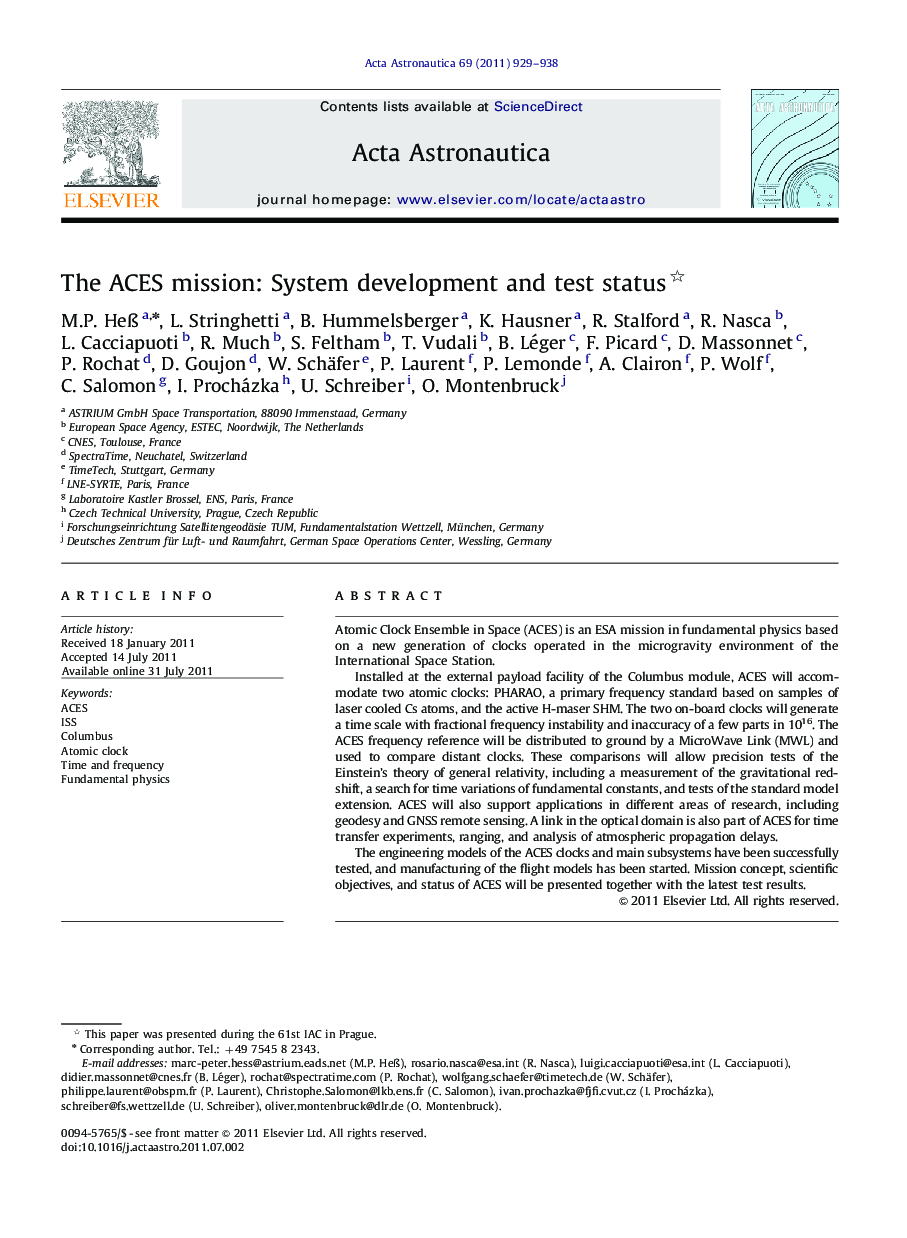| Article ID | Journal | Published Year | Pages | File Type |
|---|---|---|---|---|
| 1715500 | Acta Astronautica | 2011 | 10 Pages |
Atomic Clock Ensemble in Space (ACES) is an ESA mission in fundamental physics based on a new generation of clocks operated in the microgravity environment of the International Space Station.Installed at the external payload facility of the Columbus module, ACES will accommodate two atomic clocks: PHARAO, a primary frequency standard based on samples of laser cooled Cs atoms, and the active H-maser SHM. The two on-board clocks will generate a time scale with fractional frequency instability and inaccuracy of a few parts in 1016. The ACES frequency reference will be distributed to ground by a MicroWave Link (MWL) and used to compare distant clocks. These comparisons will allow precision tests of the Einstein's theory of general relativity, including a measurement of the gravitational red-shift, a search for time variations of fundamental constants, and tests of the standard model extension. ACES will also support applications in different areas of research, including geodesy and GNSS remote sensing. A link in the optical domain is also part of ACES for time transfer experiments, ranging, and analysis of atmospheric propagation delays.The engineering models of the ACES clocks and main subsystems have been successfully tested, and manufacturing of the flight models has been started. Mission concept, scientific objectives, and status of ACES will be presented together with the latest test results.
► The ACES mission completed development and testing of prototypes. ► The ACES prototype test campaign demonstrated the specified performances. ► Manufacturing of the flight model has started to be ready for launch in 2014.
